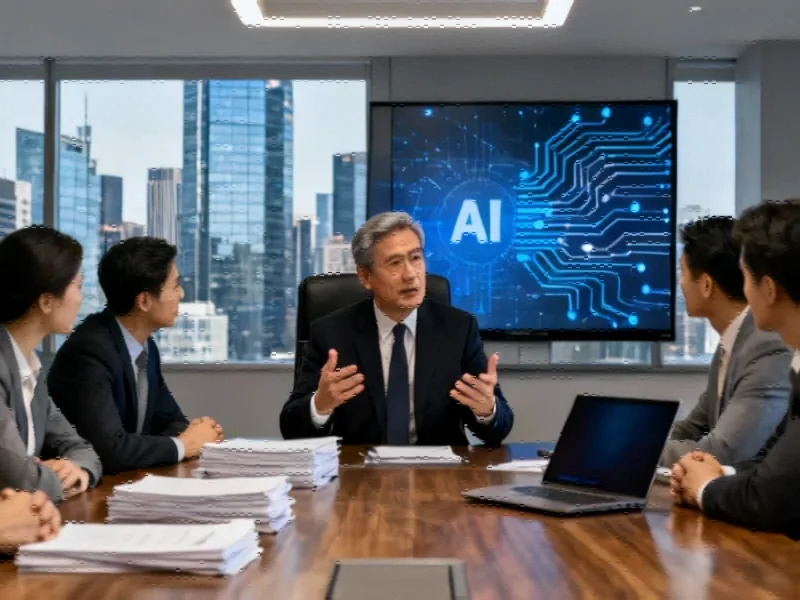According to ZDNet, OpenAI has unveiled “Aardvark,” a GPT-5-powered autonomous agent designed to identify and help patch security vulnerabilities, released on Thursday. The agent began as an internal tool for OpenAI’s developers and leverages LLM-powered reasoning to examine code repositories, discover vulnerabilities, explain them through annotations, prove their existence in sandboxed environments, and generate patches using OpenAI’s Codex assistant. Aardvark is currently available in private beta to select partners, with OpenAI using participant feedback to refine detection accuracy and validation workflows. This announcement comes alongside findings that 96% of IT professionals consider AI agents a security risk while deploying them anyway, highlighting the complex relationship between AI and cybersecurity.
Table of Contents
The Architecture Revolution in Security Research
What makes Aardvark particularly significant isn’t just its artificial intelligence capabilities, but its agentic architecture. Traditional security scanning tools operate on predefined rules and patterns, whereas Aardvark’s multi-stage reasoning process represents a fundamental shift. The ability to understand a codebase‘s purpose and security implications before even beginning vulnerability hunting suggests contextual awareness that current tools lack. This approach mirrors how senior security researchers work – first understanding the system’s architecture and business logic before diving into code-level analysis. The sandboxed validation step is particularly noteworthy, as it moves beyond static analysis to dynamic testing, potentially catching vulnerabilities that only manifest during execution.
The Trust Paradox in Autonomous Security
The statistic that 96% of IT professionals view AI agents as security risks while deploying them anyway reveals a critical industry dilemma. As organizations race to adopt AI-powered security tools, they’re essentially trusting autonomous systems to protect them from threats that could be exacerbated by those same systems. This creates a circular dependency where we’re using AI to defend against AI-powered attacks, a scenario that OpenAI’s own research acknowledges is becoming more common. The private beta approach suggests OpenAI recognizes these trust issues and is taking a cautious rollout strategy, but the fundamental question remains: how do we verify that the guardian isn’t becoming a vulnerability itself?
Shifting Security Economics and Market Implications
Aardvark’s emergence signals a potential disruption in the $200 billion cybersecurity market. Traditional vulnerability management companies like Tenable, Qualys, and Rapid7 have built businesses around scanning and prioritization, but Aardvark’s autonomous patching capability could compress the vulnerability lifecycle dramatically. If successful, this could force incumbent players to accelerate their own AI integration or risk becoming obsolete. However, the economics of autonomous security research raise questions about liability – if Aardvark misses a critical vulnerability that leads to a breach, who bears responsibility? The current model of security tools providing information while humans make decisions creates clear accountability lines that autonomous systems blur.
Technical Limitations and Scaling Challenges
While promising, Aardvark faces significant technical hurdles that the private beta will likely uncover. The challenge of false positives in security scanning is legendary, and adding AI reasoning doesn’t necessarily solve this – it might even complicate it by introducing new types of misinterpretation. The tool’s effectiveness will also depend on its ability to understand complex, interconnected systems rather than isolated repositories. Enterprise environments often involve multiple programming languages, legacy systems, and custom frameworks that could challenge even advanced OpenAI models. Additionally, the computational cost of running such intensive analysis at scale across large enterprises could become prohibitive, potentially limiting adoption to well-resourced organizations.
The Future Trajectory of Autonomous Security
Looking forward, tools like Aardvark represent just the beginning of a broader transformation in how we approach software security. We’re likely to see these capabilities integrated directly into development environments, shifting security left to the point of code creation rather than post-commit detection. The natural evolution would be AI systems that not only find and patch vulnerabilities but help design secure architectures from the outset. However, this also raises concerns about over-reliance – as these tools become more capable, human security expertise might atrophy, creating systemic risk if the AI systems themselves become compromised or develop unexpected behaviors. The unusual name “Aardvark” itself suggests OpenAI wants to position this as a specialized tool rather than a general-purpose solution, perhaps anticipating these very concerns.
Related Articles You May Find Interesting
- Docker’s Security Crisis Deepens with Critical Path Traversal Flaw
- Canva’s Imagination Era: Why IT Leaders Can’t Ignore This AI Shift
- The Crypto Founder Cash-Out: Smart Wealth Management or Dangerous Incentive?
- Powell’s AI Warning: The Great Freeze Hits Labor Markets
- Tanzania’s Election Internet Blackout: Digital Democracy Under Siege



